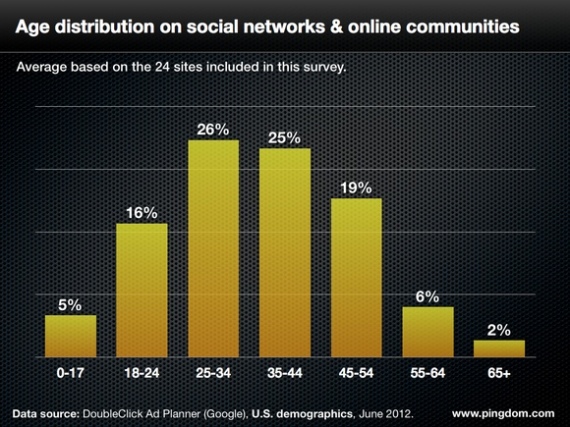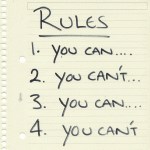 Twitter continues to be the fastest growing social media platform at the moment – but that growth seems to be primarily led by individuals with varying degrees of success and sustainability. By now I’m sure you all have several friends who have tried Twitter – some love it, others can’t see the point of it – which doesn’t tend to help its credibility as a business tool.
Twitter continues to be the fastest growing social media platform at the moment – but that growth seems to be primarily led by individuals with varying degrees of success and sustainability. By now I’m sure you all have several friends who have tried Twitter – some love it, others can’t see the point of it – which doesn’t tend to help its credibility as a business tool.
 The truth of it is that it can be a very valuable tool in your business arsenal – BUT – unlike other social media tools, it delivers little value until you put a significant amount of effort into developing it. Now when I say “developing” – I don’t mean in the classic “programming lines of code” sense – but rather, in order to be useful to a business – you need a defined strategy, and a sustained input from your part before it begins to yield results back. What that input is, and how long it takes you to put in enough input to yield an output, really depends on which of the main strategies you decide to pursue – and as with most applications that work on the establishment of information flows – there are two main strategies: Push and Pull.
The truth of it is that it can be a very valuable tool in your business arsenal – BUT – unlike other social media tools, it delivers little value until you put a significant amount of effort into developing it. Now when I say “developing” – I don’t mean in the classic “programming lines of code” sense – but rather, in order to be useful to a business – you need a defined strategy, and a sustained input from your part before it begins to yield results back. What that input is, and how long it takes you to put in enough input to yield an output, really depends on which of the main strategies you decide to pursue – and as with most applications that work on the establishment of information flows – there are two main strategies: Push and Pull.
 The Pull strategy for Twitter is simple. It revolves around an understanding that what Twitter can provide to you is an unrivalled personalized information source. Whatever niche information requirements you have – chances are, there are people out there posting tweets on it. Find them, follow them, and eventually your information feed begins to deliver a constant source of valuable data – be it important headlines, links to interesting articles, relevant quotes, allowing you to follow conferences remotely, etc etc – the more careful you are in selecting the people you follow – the more relevant that data feed becomes. In pure Pull strategies – you don’t care how many people follow you – it’s irrelevant and secondary to achieving a quality information flow to your desktop. For those of you considering this strategy – Don Smith has written an excellent Twitter 101 Primer for you.
The Pull strategy for Twitter is simple. It revolves around an understanding that what Twitter can provide to you is an unrivalled personalized information source. Whatever niche information requirements you have – chances are, there are people out there posting tweets on it. Find them, follow them, and eventually your information feed begins to deliver a constant source of valuable data – be it important headlines, links to interesting articles, relevant quotes, allowing you to follow conferences remotely, etc etc – the more careful you are in selecting the people you follow – the more relevant that data feed becomes. In pure Pull strategies – you don’t care how many people follow you – it’s irrelevant and secondary to achieving a quality information flow to your desktop. For those of you considering this strategy – Don Smith has written an excellent Twitter 101 Primer for you.
 The Push strategy is a little more complex – as what you’re trying to do is be read rather than necessarily do the reading. Maybe you’re a company with a product message to distribute, maybe you’re a consultant trying to build up your personal brand, maybe you’re a store with product specials to sell – whatever you are, the basic concept is that you have a message that you want people to see and read. Here, the name of the game is to amass followers – to get the largest possible following to actively subscribe to, and read, your feed. Whilst that sounds easy – it’s far from that – you have two big challenges ahead of you:
The Push strategy is a little more complex – as what you’re trying to do is be read rather than necessarily do the reading. Maybe you’re a company with a product message to distribute, maybe you’re a consultant trying to build up your personal brand, maybe you’re a store with product specials to sell – whatever you are, the basic concept is that you have a message that you want people to see and read. Here, the name of the game is to amass followers – to get the largest possible following to actively subscribe to, and read, your feed. Whilst that sounds easy – it’s far from that – you have two big challenges ahead of you:
1) to get people to want to subscribe to you and
2) To get subscribers to pay attention to your tweets.
It’s no easy feat to convince thousands, or even millions of people to want to subscribe to you. Unless you’re a chique celebrity like Ashton Kutcher, a regular media outlet like CNN, or a cult brand like Whole Foods or Twitter itself (To see a list of the most followed on Twitter, go to http://twitterholic.com/ ) – you’re not going to get a million people seeking you out to follow you just by being present online and twittering any old rubbish you feel like. That means you have to do it the hard way.
At the recent World Innovation Forum – I had the unusual opportunity to poll a bunch of fellow veteran social media mavens and active twitter users (“twerps” is apparently the preferred group name currently by the way) on what they look for when they decide to follow someone new. The results were interesting with the top three answers being:
1) User name – is it someone I know, want to know, or have heard of in the past.
2) Profile – What do those 160 characters you use to describe yourself on the right hand pane of your Twitter page say about you and what you do? Is it of interest? Are YOU of interest?
3) Your last 20 tweets – what kind of information have you been posting? Is it all self-serving nonsense? Is there value in your flow? How often do you post? Do I want to read more?
So on consideration of these three points – people make the decision as to whether or not to follow you. So how does that translate into an actionable strategy? Here’s how:
1) Understand who you are and what social role you want play online – Decide upon your “social brand” – are you posting as a corporate entity or as an individual? Is this an official feed or a casual conversation? What’s the ultimate goal of this interaction? Is it to sell? To build a community? To build a brand? – use the answers to those questions to come up with a username that expresses your intent and your identity.
2) Describe yourself and your interests – the profile section tells people who don’t recognize your username why they should join you. Who are you really? What are your interests? What kind of posts do you find interesting and will you be posting yourself?
3) Provide value to your community – In order to get people to follow you, and to stay following you – it’s ultimately about content. It’s about providing value to your following. It doesn’t matter if you post several times an hour or once a month – make those posts worthwhile reading, and people will stay subscribed to you.

Don’t tell us about your trip to the bathroom, or the pain of not getting upgraded on your trips across the Atlantic, or that you’re on your way to get your kids from school – trust me, no one wants to hear that on Twitter – use your Facebook account for that kind of interaction (incidentally – by now you should understand that the social media space is complex – and there are different tools for different uses. For example – LinkedIn is all about connecting to business connections and maintaining business networks; Facebook is all about staying connected to personal friends and family; Twitter is about establishing an information flow. Each of these is a different tool, and whilst it’s possible to link your status updates and tweets – it’s usually a mistake to do so in my opinion as what constitutes “useful and valuable content” is very different for each network – and to ignore that when posting, will lead to others ignoring your postings. Ultimately, the point of all social networks is to be heard! Hey – who ever said this was going to be easy?). It doesn’t even matter if the content is not yours ultimately – even a series of posts with links to interesting content can be deemed valuable. Just keep people interested and reading!
 There’s another reason to provide valuable content, especially on Twitter – Twitter is a “viral community”. That is, it works on a viral process of message dissemination to the community at large. You post something of value, I see it, and I “Re-Tweet” it – meaning I pass it on to my own subscriber list with appropriate attribution to the original poster. I get kudos points from my community for passing on something valuable, and you get exposure to my subscriber list who may well decide to subscribe to your postings too (assuming you’ve followed the three steps above to create an interesting profile page!). There’s also exists a general concept of mutual following – You follow me because I post good info, and in return I’ll probably follow you too to see what your feed is like. Of course, if you then post a load of rubbish, I’ll probably end up deleting you from the list of people I follow – but that’s up to you to establish the value to me as a reader 🙂
There’s another reason to provide valuable content, especially on Twitter – Twitter is a “viral community”. That is, it works on a viral process of message dissemination to the community at large. You post something of value, I see it, and I “Re-Tweet” it – meaning I pass it on to my own subscriber list with appropriate attribution to the original poster. I get kudos points from my community for passing on something valuable, and you get exposure to my subscriber list who may well decide to subscribe to your postings too (assuming you’ve followed the three steps above to create an interesting profile page!). There’s also exists a general concept of mutual following – You follow me because I post good info, and in return I’ll probably follow you too to see what your feed is like. Of course, if you then post a load of rubbish, I’ll probably end up deleting you from the list of people I follow – but that’s up to you to establish the value to me as a reader 🙂
So keep posting value add to your twitter feed, keep following people in your target market as well as those who decide to follow you, and be an active participant in the conversations – and you’ll soon amass a growing “following”. That then gives you the opportunity to slip in marketing, sales, or branding messages into the flow to not only a large audience, but – if you follow the rules above – an actively listening audience – the nirvana of corporate sales and marketing folks!

These are of course, very general strategies – and several other variants exist – I’d love to hear what YOUR Twitter strategies are – or tips you may have for “pushers” and “pullers” – share away!
 Hardly a day goes by without me hearing a senior executive at some major company cite the growing influence of the upcoming “Millennial Generation” as the reason for their foray into the enterprise social world.
Hardly a day goes by without me hearing a senior executive at some major company cite the growing influence of the upcoming “Millennial Generation” as the reason for their foray into the enterprise social world.  Although there are plenty of reasons I can think of why Millennials and their ilk don’t use social to the same extent as older generations (age and access come to mind) – the rise of Social Media in our personal lives – driven by our desire to communicate with, interact with and influence our friends, relatives, and to gain access to information which has become available at an unprecedented level – has driven the familiarity and adoption of Social Media way ahead of the expected Millennial boom.
Although there are plenty of reasons I can think of why Millennials and their ilk don’t use social to the same extent as older generations (age and access come to mind) – the rise of Social Media in our personal lives – driven by our desire to communicate with, interact with and influence our friends, relatives, and to gain access to information which has become available at an unprecedented level – has driven the familiarity and adoption of Social Media way ahead of the expected Millennial boom. Indeed, many organizations see the demand and desire from employees for social technologies and processes in the workplace to outrank the “traditional” fringe benefits that have been the focus of Silicon Valley HR orgs since the early 2000s – pool and ping pong tables and “chill out rooms” are making way for flexible working and the ability to feel deeply engaged at a value-level via social tools to the work of their company. Social technologies in reality are no longer a nice to have, but are very much a must have!
Indeed, many organizations see the demand and desire from employees for social technologies and processes in the workplace to outrank the “traditional” fringe benefits that have been the focus of Silicon Valley HR orgs since the early 2000s – pool and ping pong tables and “chill out rooms” are making way for flexible working and the ability to feel deeply engaged at a value-level via social tools to the work of their company. Social technologies in reality are no longer a nice to have, but are very much a must have! 







 Twitter continues to be the fastest growing social media platform at the moment – but that growth seems to be primarily led by individuals with varying degrees of success and sustainability. By now I’m sure you all have several friends who have tried Twitter – some love it, others can’t see the point of it – which doesn’t tend to help its credibility as a business tool.
Twitter continues to be the fastest growing social media platform at the moment – but that growth seems to be primarily led by individuals with varying degrees of success and sustainability. By now I’m sure you all have several friends who have tried Twitter – some love it, others can’t see the point of it – which doesn’t tend to help its credibility as a business tool. The truth of it is that it can be a very valuable tool in your business arsenal – BUT – unlike other social media tools, it delivers little value until you put a significant amount of effort into developing it. Now when I say “developing” – I don’t mean in the classic “programming lines of code” sense – but rather, in order to be useful to a business – you need a defined strategy, and a sustained input from your part before it begins to yield results back. What that input is, and how long it takes you to put in enough input to yield an output, really depends on which of the main strategies you decide to pursue – and as with most applications that work on the establishment of information flows – there are two main strategies: Push and Pull.
The truth of it is that it can be a very valuable tool in your business arsenal – BUT – unlike other social media tools, it delivers little value until you put a significant amount of effort into developing it. Now when I say “developing” – I don’t mean in the classic “programming lines of code” sense – but rather, in order to be useful to a business – you need a defined strategy, and a sustained input from your part before it begins to yield results back. What that input is, and how long it takes you to put in enough input to yield an output, really depends on which of the main strategies you decide to pursue – and as with most applications that work on the establishment of information flows – there are two main strategies: Push and Pull. The Pull strategy for Twitter is simple. It revolves around an understanding that what Twitter can provide to you is an unrivalled personalized information source. Whatever niche information requirements you have – chances are, there are people out there posting tweets on it. Find them, follow them, and eventually your information feed begins to deliver a constant source of valuable data – be it important headlines, links to interesting articles, relevant quotes, allowing you to follow conferences remotely, etc etc – the more careful you are in selecting the people you follow – the more relevant that data feed becomes. In pure Pull strategies – you don’t care how many people follow you – it’s irrelevant and secondary to achieving a quality information flow to your desktop. For those of you considering this strategy – Don Smith has written an excellent
The Pull strategy for Twitter is simple. It revolves around an understanding that what Twitter can provide to you is an unrivalled personalized information source. Whatever niche information requirements you have – chances are, there are people out there posting tweets on it. Find them, follow them, and eventually your information feed begins to deliver a constant source of valuable data – be it important headlines, links to interesting articles, relevant quotes, allowing you to follow conferences remotely, etc etc – the more careful you are in selecting the people you follow – the more relevant that data feed becomes. In pure Pull strategies – you don’t care how many people follow you – it’s irrelevant and secondary to achieving a quality information flow to your desktop. For those of you considering this strategy – Don Smith has written an excellent  The Push strategy is a little more complex – as what you’re trying to do is be read rather than necessarily do the reading. Maybe you’re a company with a product message to distribute, maybe you’re a consultant trying to build up your personal brand, maybe you’re a store with product specials to sell – whatever you are, the basic concept is that you have a message that you want people to see and read. Here, the name of the game is to amass followers – to get the largest possible following to actively subscribe to, and read, your feed. Whilst that sounds easy – it’s far from that – you have two big challenges ahead of you:
The Push strategy is a little more complex – as what you’re trying to do is be read rather than necessarily do the reading. Maybe you’re a company with a product message to distribute, maybe you’re a consultant trying to build up your personal brand, maybe you’re a store with product specials to sell – whatever you are, the basic concept is that you have a message that you want people to see and read. Here, the name of the game is to amass followers – to get the largest possible following to actively subscribe to, and read, your feed. Whilst that sounds easy – it’s far from that – you have two big challenges ahead of you:

 There’s another reason to provide valuable content, especially on Twitter – Twitter is a “viral community”. That is, it works on a viral process of message dissemination to the community at large. You post something of value, I see it, and I “Re-Tweet” it – meaning I pass it on to my own subscriber list with appropriate attribution to the original poster. I get kudos points from my community for passing on something valuable, and you get exposure to my subscriber list who may well decide to subscribe to your postings too (assuming you’ve followed the three steps above to create an interesting profile page!). There’s also exists a general concept of mutual following – You follow me because I post good info, and in return I’ll probably follow you too to see what your feed is like. Of course, if you then post a load of rubbish, I’ll probably end up deleting you from the list of people I follow – but that’s up to you to establish the value to me as a reader 🙂
There’s another reason to provide valuable content, especially on Twitter – Twitter is a “viral community”. That is, it works on a viral process of message dissemination to the community at large. You post something of value, I see it, and I “Re-Tweet” it – meaning I pass it on to my own subscriber list with appropriate attribution to the original poster. I get kudos points from my community for passing on something valuable, and you get exposure to my subscriber list who may well decide to subscribe to your postings too (assuming you’ve followed the three steps above to create an interesting profile page!). There’s also exists a general concept of mutual following – You follow me because I post good info, and in return I’ll probably follow you too to see what your feed is like. Of course, if you then post a load of rubbish, I’ll probably end up deleting you from the list of people I follow – but that’s up to you to establish the value to me as a reader 🙂




